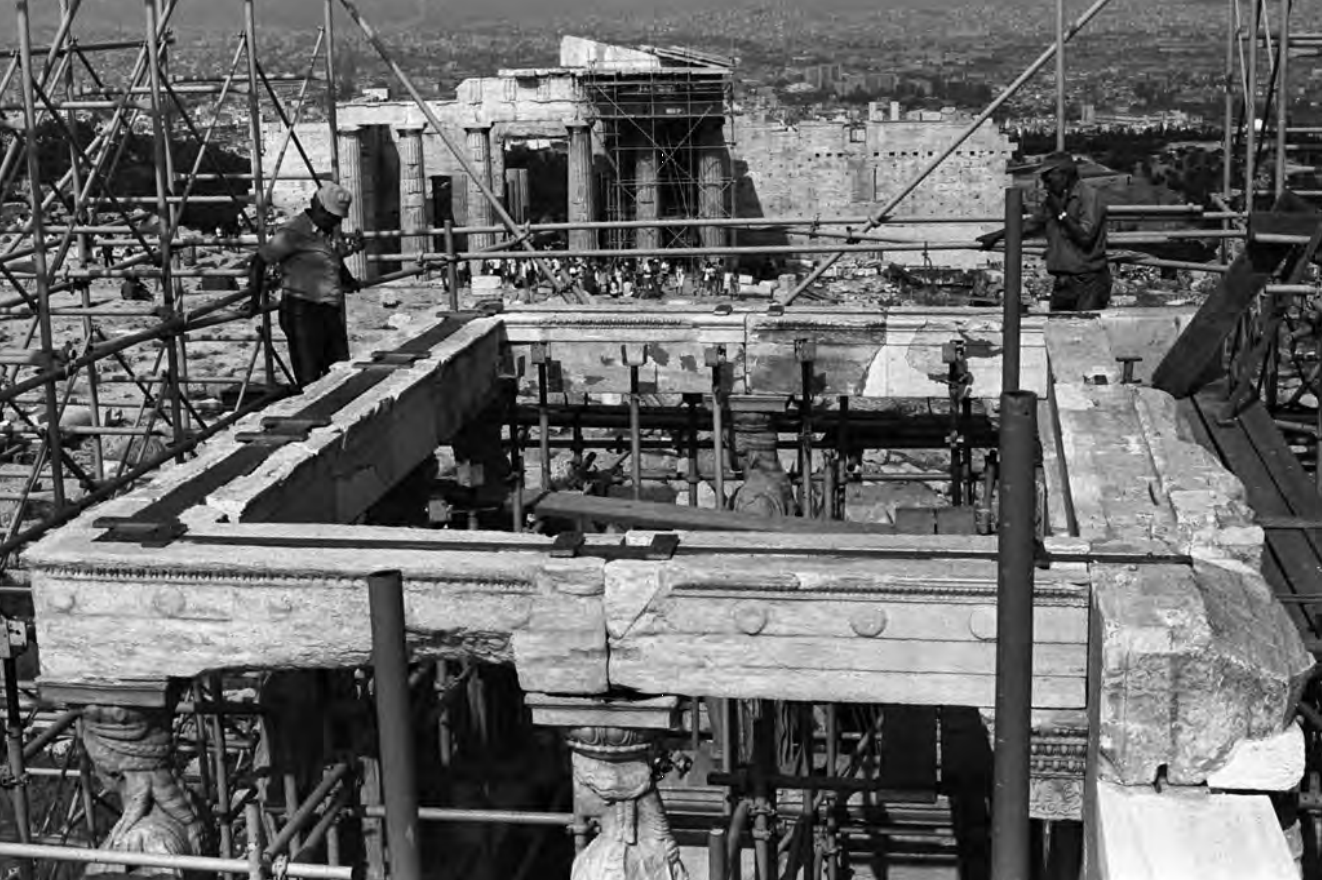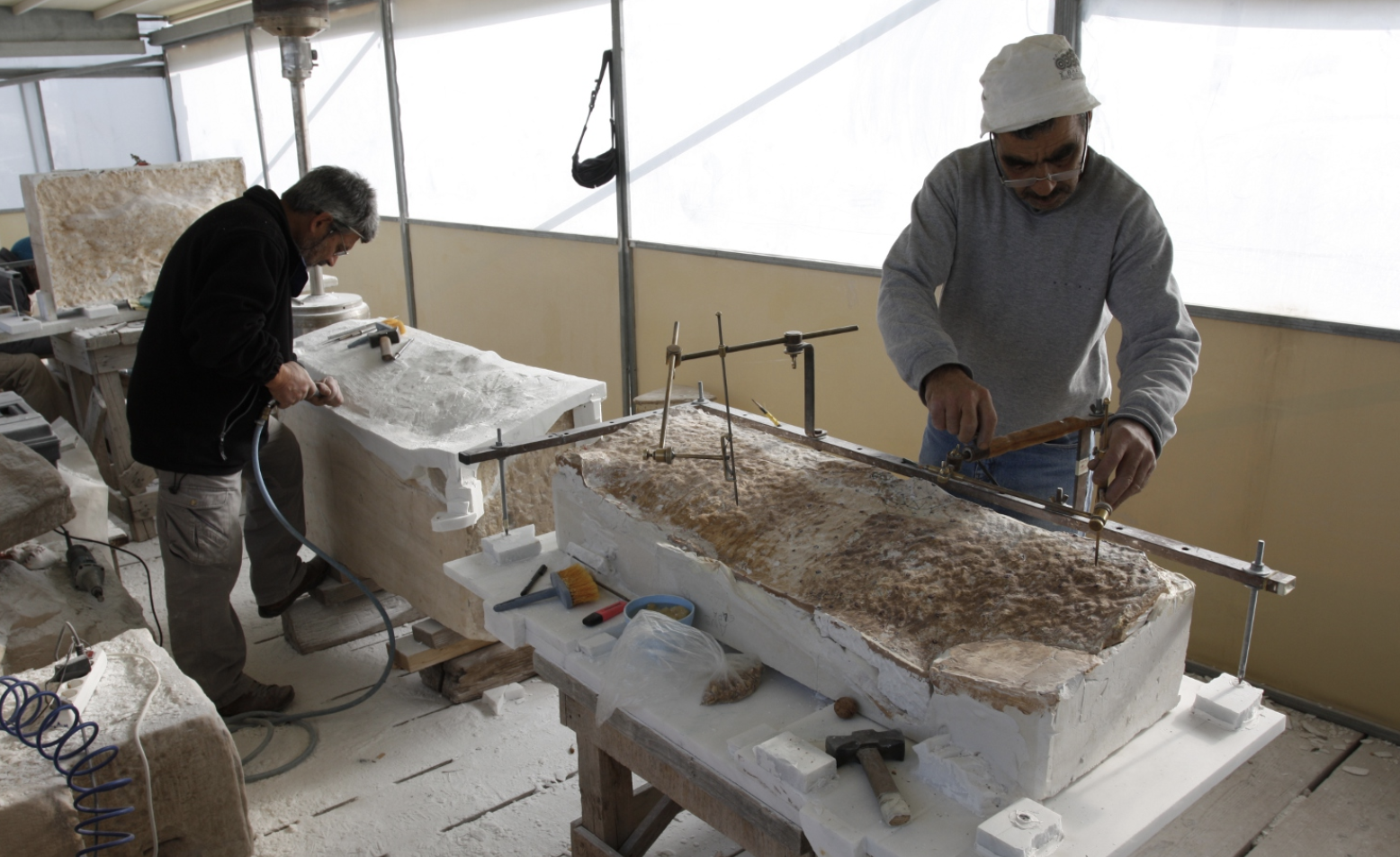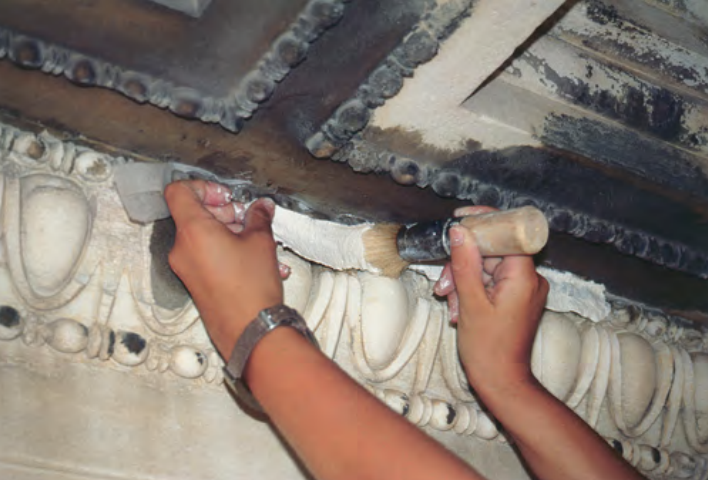


The Restoration Process and Techniques
Under the International Charter for the Conservation and Restoration of Monuments and Sites (The Venice Charter, 1964), the interventions on the Acropolis monuments are conducted using a framework of contemporary technology and traditional techniques and methods to help achieve the objective of repairing the ancient structures and displaying their historical and artistic values. The following are sets of principles formulated specifically for the ancient Greek ruins.

- Anastelosis – The methodological basis followed through during the Acropolis restoration process, anastylosis is the archaeological practice of reassembling fragments of ancient monuments that have fallen or decayed through the usage of original building materials.
- Reversibility – The theoretical principle in which contemporary renovations of the interventions must not interfere with the possibility of future improvements so that the monuments are restored to their prior conditions. This principle gives emphasis on the documentation necessary for the works so that errors about the Acropolis buildings are prevented from surfacing and today’s information remains accurate for future interventions and generations. It is incorporated into every tactic used to preserve and reconstruct the ancient monuments.
- Respect and Proper Care – Showing upmost concern and respect for the authentic, ancient material and their original structural functions within the architecture. The handling of these members should be dealt with responsibly and professionally to ensure its originality and preservation. This includes placing marble blocks back to their initial positions and safely dismantling structures that have been damaged in earlier restorations or show deficiencies in their structures due to their incorrect placements. Such consideration is also applied when new material is being adjoined, such as Pentelic marble and internal metal structures, that must be deemed harmless and compatible with the authentic materials already present. To secure this precaution, much of the equipment and technology used for the interventions integrates modern practices with ancient, traditional building practices. This is because many of the modern machines do not produce the top-quality results that should capture the achievements of the classical era.
Techniques

Dismantling and Removal of Rust
In areas where there is severe damage, a dismantling process begins where the affected architectural members are removed along with any rusted reinforcements into a laboratory to be structurally restored. A system of metal cranes and scaffolding controlled by electricity at low speeds allow transportation of the members throughout the site along with special pointing devices and grabs for lifting. Specialized cranes, such as portal and bridge-cranes, a Stiffleg derrick crane, and retractable cranes, are used for movement precision to carefully transfer materials. The rusted material is replaced with titanium rods and other fixtures in this matter.

Surface Conservation
This work consists of the consolidation of fragmented surfaces, the filling of cracks in the monuments with new mortar, and the removal of soot deposit and black crust. When the marble exhibits sugaring, a form of decay resulting in the loss of marble crystals and surface details, the exposed area is sprayed with a solution of lime and calcium carbonate. Other imperfections such as cracks and interior gaps located within the architectural members are cleaned with tools using hydrogen peroxide and air or de-ionized water. These fills are then completed by applying hydraulic grout consisting of white Portland cement and fine-grained Pozzolano. Another type of cleaning used on the monuments and other structures to eliminate debris is laser cleaning. A hybrid system was developed where the machine emitted IR and UV radiation for the best results and prevention of discoloration. This is a dry process that left no waste-material and proved to be most controllable and successful in the removal of pollution deposit.

Casting and Titanium Rods
As stated before, many of the original architectural members on each monument have been taken down and substituted with sturdier, more reliable replacements. This is a result of casting, where supplements of missing parts to monumental structures are made by using a pointing device that is then transferred to the cast of the new marble, or Pentelic marble, and secured with an inorganic plaster made from white cement. To infuse the infill stonework with the ancient building blocks, titanium reinforcements and a special, white cement mortar are used. The sealing of the joints with a unique mortar mixture of lime, quartz-sand, and pigments (iron oxides) serves the purpose of preventing any solid particles and rainwater to penetrate the surface. Once placed in their original locations, the new architectural members are united through additional titanium clamps and dowels according to an ancient system of joining.